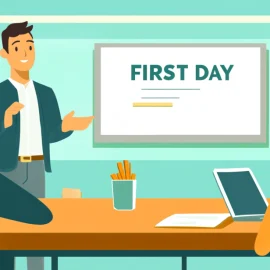
This is a free excerpt from one of Shortform’s Articles. We give you all the important information you need to know about current events and more.
Don't miss out on the whole story. Sign up for a free trial here .
What are extreme interviews? How are job interviews changing? Does extreme interviewing work?
Job interviews are changing, with Zoom and AI screenings replacing some in-person interviews. In the case of extreme interviews, which use outlandish tactics such as brainteasers or making applicants dance, employers are putting candidates through the wringer like never before.
Read on to learn about extreme interviews and experts’ advice on conducting successful interviews.
What Are Extreme Interviews?
With the average cost per hire at almost $4,700 and the indirect costs even higher, employers are understandably nervous about hiring—especially in the context of an uncertain economic outlook. So how do they maximize their chance of hiring the best person for the job? They turn to a century-old cultural tradition: the job interview. However, the extreme interviewing trend, which peaked in the early 2010s, has still managed to stick around as a preferred tactic among some employers. But, what are extreme interviews exactly?
In this article, we’ll take a look at employer tactics in job interviews—including extreme interviewing—to explain which strategies don’t work and which do.
A Brief History of the Job Interview
The first ever job interview was in 1921. Thomas Edison, frustrated by his inability to distinguish between applicants for a research assistant position, gave them a written test of 150 questions (including “Where was Napoleon born?” and “Name three powerful poisons”). There was also a sit-down interview in which he served the applicant soup. Applicants who added salt and pepper to the soup without tasting it first were ruled out—they had outed themselves as relying on assumptions rather than data.
In the intervening century, job interviews have evolved… Or have they? For an example of what some may consider an extreme interview tactic, one boss’s “coffee cup test” has been doing the rounds recently: On the way to the interview room, the boss walks the applicant through the spotless company kitchen and insists they take a drink into the interview. After the interview, he watches to see what the applicant does. Applicants who don’t take the cup back to the kitchen and wash it don’t get hired.
What Employers Shouldn’t Do
Getting interviews wrong can backfire spectacularly. Here’s what not to do.
Don’t Be Weird: The Extreme Interview
Some managers have reported sneaking out to look at the applicant’s car or asking the applicant to drive theirs, getting applicants drunk, making them dance, and asking “extreme interview” questions like “How weird are you on a scale of 1 to 10?” or “Which dinosaur are you?” (Hint: T-Rex is the wrong answer).
Google famously plied its applicants with brainteasers. “You are shrunk to the height of a nickel and thrown in a blender. The blades start moving in 60 seconds. What do you do?” (Google eventually discontinued these after finding they didn’t predict job performance.)
Extreme interviewing techniques peaked in the early 2010s, when big tech companies had their pick of applicants, and they’ve largely disappeared as the applicant pool has shrunk. The techniques are also linked to dark personality traits—not the kind of thing you want to be showcasing to potential hires.
Don’t Waste Candidates’ Time: The Remote Interview
The rise of remote interviewing techniques, such as video interviews and asynchronous video recordings, has saved both interviewers and candidates time and money. But in some cases, the ease of scheduling Zoom meetings has led to endless interview cycles that require significant time investment (including lost income from days spent preparing)—after which candidates are being sent generic rejection emails or ghosted completely.
Recruiting experts say companies should beware of dragging out the interview: The best talent is off the market within 10 days, and other candidates are likely to drop out of an interview process that’s too long.
There are also reports of companies appropriating the work of job applicants and presenting it as their own. This is short-term gain for long-term pain, as interviewees talk to friends and family about bad experiences and post public reviews of interviews on sites like Glassdoor.
What Does Work for Employers?
Now that we’ve explained how extreme interviews can undermine the hiring process, let’s explore some successful interviewing techniques. With hiring likely to remain challenging in 2023, what can employers do to make sure they hire the best applicants?
Achieve the Right Balance in Interviews
While finding out whether a candidate is a pterodactyl or a triceratops is a waste of everyone’s time, well-structured interviews based on behavioral questions (“Tell me about a time when…”) and samples of prior work do predict job performance.
If You’re Going to Make It Weird, At Least Be Fair
Some extreme interview techniques are justified. One head chef, for example, gets applicants to make him an omelet. He’s not looking at their technique, though—he’s looking at their attitude. If the applicant gets every last drop out of the egg, they’re a winner.
A vet clinic uses another strange but fair technique: conducting interviews while spaying a cat. One candidate, who fainted, later reported: “Was not offered the job (after I woke up).”
If the job doesn’t involve cooking or conducting surgery, companies can still organize a fun recruitment event, like a bowling night, where candidates can informally talk with current staff.

Want to fast-track your learning? With Shortform, you’ll gain insights you won't find anywhere else .
Here's what you’ll get when you sign up for Shortform :
- Complicated ideas explained in simple and concise ways
- Smart analysis that connects what you’re reading to other key concepts
- Writing with zero fluff because we know how important your time is






